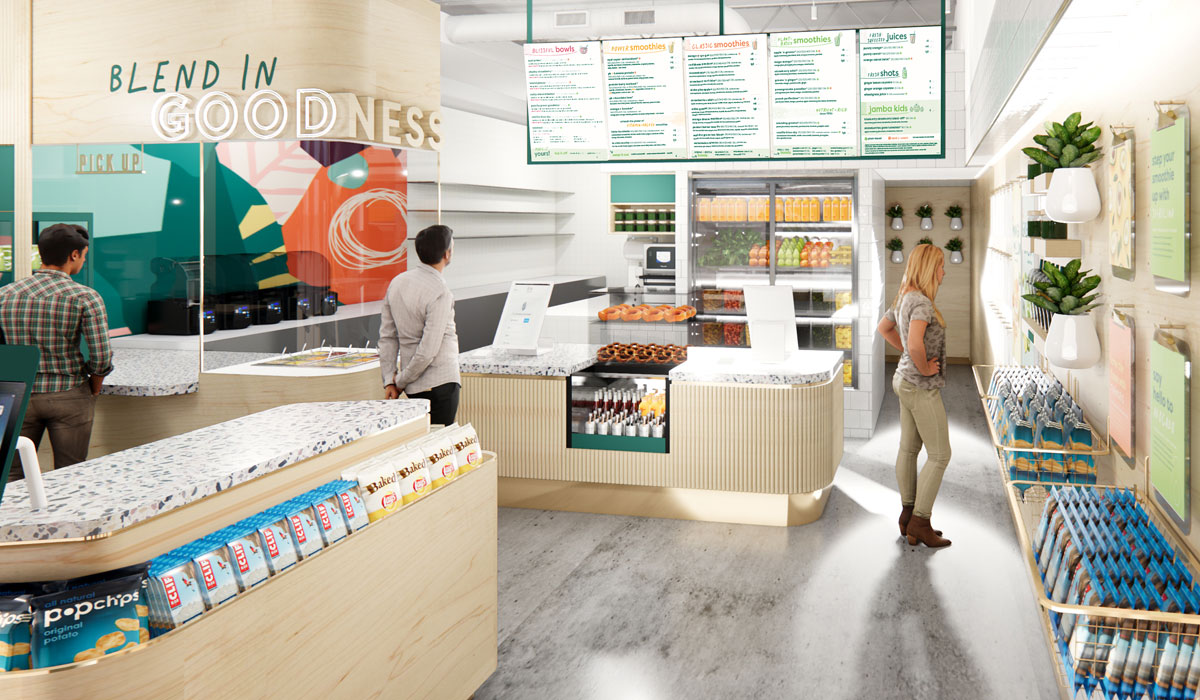Jamba was born in1990 when founder Kirk Perron had a big idea while relaxing with a smoothie after a workout. Why not use a blender to inspire and simplify healthful living everywhere? Now, in less than 30 years, Jamba has grown to become a market-leading smoothie brand, providing premium blends to customers in more than 800-plus locations around the world.
In late-2017, Jamba brought in a new chief marketing officer, Claudia Schaefer, who initiated a new look at the Jamba brand in a project deeply rooted in consumer insights and data analytics. Her team’s proprietary research uncovered a disconnect between the current Jamba offerings and what customers today expect from a healthfulness perspective. These customers appreciated the leadership position that Jamba had staked out in the “healthful” market, but they felt the company’s menu did not represent the great leaps forward that competitors had made in recent years. The team concluded that an “evolved” customer experience was key to moving the brand forward.
The Jamba team decided that this was an opportunity to create a new “Total Store Communications” program, which would highlight a new menu merchandising strategy with optimized menuboards and in-store communications to guide customers along the “path-to-purchase (P2P).
Establish a menu communications strategy
The first step was to create and agree upon a menu communications strategy that would drive and prioritize all menu communications and merchandising throughout the store. Restaurant consultancy King-Casey, which Jamba tapped for the job, was impressed by the quantity and quality of the Jamba research. The chain did a stellar job of putting together reams of sales data and competitive analyses. Equally important, it put together a high-level team representing a range of disciplines and franchise partners to participate in an all-day menu communications strategy session that King-Casey facilitated. The team approach meant that all sectors of the company were part of the process, making eventual buy-in much easier.
Every item on Jamba’s menu was evaluated and prioritized based on hard data about sales, profits, industry trends and consumer research. The strategy that evolved identified the optimal placement of menu items (both on the menuboard and throughout the store) to help Jamba realize its business objectives. This data-driven strategy now guides what products are placed where, how they need to be merchandised and how all store communications can be leveraged to achieve the desired business results. This process is much more than attractive graphic design and cosmetics. It’s about leveraging factual data and in-depth analysis to develop strategic, business driven solutions for all in-store communications.
Next, optimize menuboards
The team’s next step was to develop a range of schematics to express in words and diagram form how the menu would be organized on menuboards to achieve the goals and objectives set forth in the menu communications strategy. Customers read menuboards very differently from printed paper menus, the company found. Jamba looked into insights concerning the menuboard “‘hot zones,” most attractive to consumers.
Two of the schematic variations were then developed into color production artwork and put into nine stores to assess the validity of the new menu communications strategy, and to identify the “best- performing” concept that would be rolled out across Jamba’s entire store system. The test results were a powerful validation of the optimized menu communications, which outperformed the current menuboards in a number of critical areas: increased sales of high profit menu categories and higher incidence of add-on sales.
Then optimize P2P zone communications
While the menuboard is arguably the most critical communicator in Jamba stores, there are many additional opportunities along the customer path-to-purchase to reinforce menu messaging and influence customer purchase decisions. That’s because every store is, in fact, a series of different customer zones (entry zone, pre-order zone, order zone, pick-up zone, etc.) In each zone, customers have different needs, attitudes and behaviors. What’s communicated from one zone to the next should be determined by these customer needs and the brand’s specific business objectives.
Guided by the new menu communication strategy, King-Casey worked closely with the Jamba team to develop total store communications solutions. First by identifying the key customer zones within the store environment, and then, by determining customer needs in each zone, and establishing zone-specific business objectives along the entire path-to-purchase. The company worked hand-in-hand with Jamba’s internal and external store design team (Sterling Rice Group) to ensure that Jamba’s new prototype store environment would directly bolster their new world-class zone communications and merchandising strategy.
This was another example of where the Jamba team was more far-sighted than many of its peers. King-Casey has understood the customer operating zone concept for many years and worked with numerous clients within its context, but this was the first instance in which the company worked directly the team designing a new prototype store. That meant that it was able to guide the actual design of the new store to more effectively leverage the merchandising and communications strategies we were developing.
The result of the entire project is a total store communication solution that will drive business outcomes and delight Jamba customers. Roll-out of the brand transformation took place in the second quarter of 2019.
As a principal and co-owner at King-Casey, Howland Blackiston serves a portfolio of clients and is a key proponent of King-Casey’s COZI (Customer Operating Zone Improvement) strategic discipline and process. King-Casey is one of the premiere retail consulting and design firms in the U.S. For more than half a century, the firm has been helping companies build competitive brands by dramatically improving the customer experience. King-Casey’s primary practice provides foodservice consulting services to optimize the performance of restaurant brands. Howland has led menu optimization projects for many of the world’s leading restaurant brands, including Starbucks, McDonald’s, Subway, Burger King, and many others in the U.S. and abroad.












